おすすめの Google 拡張機能です!新しい言葉を勉強しましょう!
Here are the recommended Chrome extensions! Let’s learn new words here!
ポッドキャストプラットフォーム|Platforms of Podcast
こちらの記事は、配信中のポッドキャストのスクリプトです。
ぜひ、ポッドキャストを聞きながら読んでください。
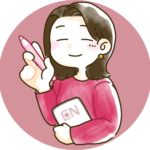 えみ先生
えみ先生もう聞いた人は、クイズをチェックしましょう!
ちょっとクイズ!|CHOTTO Quiz!
ポッドキャストを聞いた人は、ちょっとクイズを解いてみましょう。
むずかしいときは、下のスクリプトを読んで、もう一度クイズをチェックしてみてください。
【えいご】English Translation
Answer these quiz questions if you’ve listened to a new episode of my podcast.
If it was difficult, read the transcript below and try again.
❓ えみ先生が 来週 行く場所はどこですか? | Where is Emi-sensei going next week?
来週、「栃木県」の「鬼怒川温泉」に行きます!♨️
I (and my husband) am going to Kinugawa Onsen in Tochigi Prefecture!♨️
❓ えみ先生が旅行するとき、最初に 決めることは どんなことですか? | What does Emi-sensei decide first when planning a trip?
いろんなパターンがあります。えみ先生が はじめに 決めるのは、「どんなアクティビティに参加するか」「何を食べるか」「どんな有名なところに行くか」、このどれかです!📱
There are various patterns. What Emi-sensei decides first is either “what kind of activities I join,” what I eat,” or “what kind of famous places I go.” 📱
❓ えみ先生は 旅行に行くとき、必ず 持っていくものを 1つ答えてください。 | Name one thing that Emi-sensei always brings when traveling.
えみ先生が 旅行の時、必ず 持って行くものは、モバイルバッテリー / ポケットティッシュ / 小さい袋 (ごみ用) / ハンドタオル / 折りたたみ傘 / 御朱印帳 です!
What Emi-sensei brings to her trip is a mobile battery, pocket- tissue, a small bag (for trash), a hand towel, a folding umbrella, and a Goshuin (shrine stamps) book!
ポッドキャストのスクリプト|Transcript of Podcast
エピソード10、「日本での旅行の計画」
このポッドキャストは、初中級(Pre-Intermediate)レベルです。
おはようございます。こんにちは。こんばんは。
日本語の先生、エミです。
今、私は このポッドキャストを金曜日に録っていて、アップロードするのは土曜日なんですけど、 実は土曜日にテストがあります。
このテストは、ITのテストです。
私は あんまりITは、本当は興味がないんですけど、私の夫が このITのテストを受けるので、私も一緒に受けに行きます。
あんまり勉強をしてないので、 ちょっと自信がありません。
でも、がんばろうと思います。
【えいご】English Translation
Good morning. Hello. Good afternoon.
I am a Japanese teacher, Emi.
Right now, I am recording this podcast on Friday, and I will upload it on Saturday.
Actually, I have a test on Saturday. This test is an IT test.
I’m not really interested in IT, but my husband is taking this IT test, so I’m taking it together with him.
I haven’t studied much, so I’m not very confident.
But I’ll do my best.
はい、 じゃあここで先週…、先週じゃないですね。
先週は ポッドキャストを お休みしましたから、2週間前の質問をチェックしましょう。
前は こんな質問をしました。
「みなさんは、 日本で行ってみたい場所はありますか?そして、旅行の予定を立てるとき、何から決めますか?」
こんな質問でした。
【えいご】English Translation
Okay, now, let’s check last week’s—wait, not last week’s—
I took a break from the podcast last week, so let’s check the question from two weeks ago.
Before, I asked this question:
“Is there a place in Japan you want to visit? And when planning a trip, what do you decide first?”
That was the question.
日本で行ってみたい場所、どこですか?
たくさん場所がありますよね。
人気な場所は、東京とか京都とか大阪。
とっても有名です。
あと、福岡も有名ですね。北海道も有名。
でも、この場所は大きい町 なので、もっと小さい町、あんまり大きくない町も たくさんあります。
いくつあるか知っていますか?
10ですか?20ですか?
【えいご】English Translation
Where do you want to visit in Japan?
There are many places, right?
Popular places include Tokyo, Kyoto, and Osaka.
They are very famous.
Also, Fukuoka is famous, and Hokkaido is famous too.
But these places are big cities, and there are also many smaller towns.
Do you know how many there are?
Is it 10? 20?
はい、答えは、 日本は47の場所があります。
そして、この47の場所、エリアのことを都道府県と言います。
「都道府県」、聞いたこありますか。
たとえば、東京都、大阪府、神奈川県、 沖縄県、北海道。
1番 最後の文字に「都」とか 「府」とか「県」とか「道」がつきますね。
これを 合わせて「都道府県」と日本語で言います。
はい。
みなさんは、どこの都道府県に 行ったことがありますか?
そして、どこの都道府県に行きたいですか?
【えいご】English Translation
The answer is: Japan has 47 places.
And these 47 places—these areas—are called to-do-fu-ken (都道府県).
Have you heard of to-do-fu-ken before?
For example, Tokyo-to (東京都), Osaka-fu (大阪府), Kanagawa-ken (神奈川県), Okinawa-ken (沖縄県), and Hokkaido (北海道).
At the end of each name, you see “to” (都), “fu” (府), “ken” (県), or “do” (道).
Together, these are called to-do-fu-ken in Japanese.
Which to-do-fu-ken have you been to?
And which to-do-fu-ken would you like to visit?
私は 死ぬまでにやりたいことリストがあるんですけど、
「死ぬまでにやりたいことリスト」は、Bucket Listですね。
その1つが「日本の全部の都道府県に行きたい」です。
47の都道府県、 たくさんあるので、ちょっと大変です。
でも、私は もう25ぐらいの都道府県に行ったことがあります。
だから、あと22とか23ぐらい行ったら、コンプリートできます。
【えいご】English Translation
I have a “Things I Want to Do Before I Die” list.
And it technically means a Bucket List.
One of the things on my list is “I want to visit all the to-do-fu-ken in Japan.”
There are 47 to-do-fu-ken, so it’s a bit difficult.
But I’ve already been to about 25 of them.
So, if I visit 22 or 23 more, I can complete it.
そして、実は来週、栃木県というところに旅行に行きます。
栃木県、この場所は 私が はじめて行く場所です。
今まで行ったことがありません。
栃木県は 東京より 北にあります。
そして、温泉が有名です。
鬼怒川温泉という温泉があります。
【えいご】English Translation
And actually, next week, I’m going on a trip to a place called Tochigi Prefecture.
Tochigi Prefecture—this is a place I’m visiting for the first time.
I’ve never been there before.
Tochigi Prefecture is further north than Tokyo.
And it’s famous for hot springs.
There is a hot spring called Kinugawa Onsen.
夫と一緒に その鬼怒川温泉に来週 行ってきます。
だから、旅行の計画を立てないといけません。
「計画を立てる」は、”Make a plan”, “make plans”です。
今日は、私の旅行の計画の立て方を 話します。
みなさんも 自分の旅行の計画を 考えながら、ポッドキャストを聞いてみてください。
【えいご】English Translation
Next week, my husband and I are going to this Kinugawa Onsen.
So, I need to make a travel plan.
The phrase “keikaku o tateru” (計画を立てる) means “make a plan” or “make plans.”
Today, I will talk about how I make my travel plans.
Please listen to the podcast while thinking about your own travel plans.
私が旅行するときは、いろんなパターンがあります。
でも、だいたい最初にどんなアクティビティがしたいかとか、何が食べたいかを 決めます。
そのあと、飛行機や電車を調べたり、ホテルを予約したりします。
じゃあ、私が旅行の前にする 5つのステップを話したいと思います。
5つあります。
【えいご】English Translation
When I travel, there are different patterns.
But usually, first, I decide what kind of activities I want to do and what I want to eat.
After that, I check flights or trains and book a hotel.
Now, I’d like to talk about the five steps I take before traveling.
There are five steps.
まず 1つ目。
1つ目は有名な場所を調べます。
有名な場所。
たとえば、私は来週 栃木に行きます。
栃木で 有名な場所は どこだろう。
これをGoogleで調べたり、SNS、Instagramとかで 調べたりします。
来週は 栃木に行きますから、栃木で有名なところを調べました。
栃木は鬼怒川温泉というところが 有名なので、この鬼怒川温泉というエリアに 行くことにしました。
鬼怒川温泉は、日本人なら たぶん、たくさんの人が知っていると思います。
栃木は 鬼怒川温泉が有名。
このイメージは日本人はありますね。
これが1、有名な場所を調べる。
【えいご】English Translation
First step:
First, I research famous places.
Famous places.
For example, I’m going to Tochigi next week.
What famous places are there in Tochigi?
I search for this on Google or on SNS, like Instagram.
Next week, I’m going to Tochigi, so I looked up famous places in Tochigi.
Tochigi is famous for Kinugawa Onsen, so I decided to go to this Kinugawa Onsen area.
Kinugawa Onsen is a place that many Japanese people probably know.
For Japanese people, Tochigi is known for Kinugawa Onsen.
That’s the first step: researching famous places.
そして 2番。
2つ目は、行きたい有名な場所が 決まったら ホテルを予約します。
ホテルを調べて、予約をします。
実は、来週 旅行に行くんですけど、来週は 私と夫の結婚記念日です。
だから、ちょっといいホテルを予約しました。
いつもは 安いホテル、もう寝るだけ、お食事は いらないプランの…、お食事がないプランを予約して、 レストランで おいしいものを食べたり、アクティビティをするのに お金を払います。
でも、来週は記念日ですから、ちょっといいホテルを予約しました。
このホテルは温泉があって、 朝食と夕食もあります。
そして夕食はビュッフェです。
たくさん食べることができます。とっても楽しみです。
そして、これ 2つ目、ホテル予約する、ですけど、もし旅行の場所が遠いときは、飛行機や新幹線も一緒に予約します。
【えいご】English Translation
Second step:
The second step is, after deciding on the famous place I want to visit, I book a hotel.
I research hotels and make a reservation.
Actually, next week I (and my husband) are going on a trip, and next week is our wedding anniversary.
So, I booked a slightly nicer hotel.
Usually, I book a cheap hotel—just a place to sleep—with no meal plan.
I don’t book a plan that includes meals.
Instead, I use the money to eat delicious food at restaurants or do activities.
But next week is our anniversary, so I booked a slightly nicer hotel.
This hotel has a hot spring and includes breakfast and dinner.
And dinner is a buffet.
We can eat a lot. I’m really looking forward to it.
That’s the second step: booking a hotel.
But if the travel destination is far away, I also book a plane or bullet train ticket at this phase.
そして 3つ目。
3つ目は、その場所で食べたいものを 調べます。
私は 栃木に行くので、栃木の おいしいものを調べました。
栃木は 宇都宮という 大きい町があるんですけど、その町で有名な 食べ物が「宇都宮餃子」です。
「餃子」、”Dumpling”です。
私は餃子が 大好きなので、 宇都宮餃子は 絶対 食べたいと思っています。
でも、まだレストランは決めていないので、もう少しリサーチする 予定です。
【えいご】English Translation
Third step:
The third step is researching what food I want to eat there.
I’m going to Tochigi, so I researched delicious food in Tochigi.
Tochigi has a big city called Utsunomiya.
And in that city, a famous food is Utsunomiya Gyoza.
Gyoza means dumplings.
I love gyoza, so I definitely want to eat Utsunomiya Gyoza.
But I haven’t decided on a restaurant yet, so I plan to do a bit more research.
そして 4つ目。
4つ目は、おもしろいアクティビティがあるか調べます。
鬼怒川温泉で おもしろいアクティビティ。
たとえば、何かを作りますとか、何かを 体験できます、美術館に 行きますとか、そういうアクティビティを調べます。
鬼怒川温泉は、足湯カフェがあったので、そこに行く予定です。
「足湯」、わかりますか。
足湯は 足だけの温泉 ですね。小さい温泉です。
なので、足を温泉に入れて、 温泉に入りながら コーヒーを飲んだり、デザートを食べたりする予定です。
【えいご】English Translation
Fourth step:
The fourth step is researching if there are any interesting activities.
Interesting activities in Kinugawa Onsen…
For example, making something, experiencing something, visiting a museum—
I research these kinds of activities.
In Kinugawa Onsen, I found a ““ashiyu” (足湯), so I plan to go there.
Do you know “ashiyu” (足湯)?
Ashiyu is a foot bath. It’s a small hot spring just for your feet.
So, I will put my feet in the hot spring while drinking coffee and eating dessert.
そして最後、5つ目のステップは、この 行きたい場所、
たとえば ホテルとかレストラン、あとアクティビティの場所、このアクセスを調べます。
行きたい場所までの アクセスを調べます。
どうやっていきますか?
ホテルから歩いて行けますか?とか、
バスに 乗らなければいけませんか?
これを調べます。
【えいご】English Translation
Fifth step:
The last, fifth step is researching how to get to the places I want to visit—checking the access.
How do I get to the places I want to visit?
Can I walk there from the hotel?
Or do I have to take a bus?
I check these things.
うん、これが 私が 旅行するときの 5つのステップです。
- 有名な場所を調べる
- ホテルを予約する。 あと飛行機、新幹線も 予約する。
- 食べたいものを調べる
- アクティビティを調べる
- 行きたい場所のアクセス、どうやって行くかを調べる。
この 5つです。みなさんは旅行に行くとき、何から調べますか?
教えてください。
【えいご】English Translation
Yes, these are the five steps I take when I travel:
- Research famous places
- Book a hotel (and also book a flight or bullet train if needed)
- Research food I want to eat
- Research activities
- Research access—how to get to the places I want to visit
These are the five steps.
When you travel, what do you research first?
Please let me know.
そして、あと1つ。
旅行のときに 大事なのが 持ち物です。
持ち物は 何を持っていきますか?ということです。
私は旅行のとき、もちろん服とかスマホ、財布 持っていきます。
けど、旅行のときに 絶対 持っていくものが、だいたい 6つぐらいあります。
【えいご】English Translation
And one more thing.
When traveling, an important thing to consider is what to bring.
What do you take with you?
When I travel, of course, I bring clothes, my smartphone, and my wallet.
But there are about six things that I always bring when I travel.
まず 1つ目。
モバイルバッテリーです。
モバイルバッテリーは スマホの充電バッテリーです。
旅行のとき、みなさん写真を たくさん撮ったり、いろんな調べ物をしたりしますね。
Googleマップで 場所を 調べたり、Instagramで 写真を 投稿したり。
だから このモバイルバッテリーは とっても大事です。
モバイルバッテリーを 忘れて、スマホの充電がなくなると とっても 悲しいですよね。
なので、私はモバイルバッテリー 持っていきます。
これが 1つ目。
【えいご】English Translation
First item:
A mobile battery.
A mobile battery is a charging battery for a smartphone.
When traveling, everyone takes a lot of pictures and looks up various things.
You check locations on Google Maps or upload photos on Instagram, right?
That’s why a mobile battery is very important.
If you forget your mobile battery and your phone runs out of charge, it’s really sad, isn’t it?
So, I always bring a mobile battery.
That’s the first item.
そして 2つ目。
ポケットティッシュ。あとは ウエットティッシュを持っていきます。
でも、だいたい 私は ポケットティッシュだけ 持っていきますね。
日本は 食べ歩き、小さいお店で 買って、その場所で 食べる。
座って食べるじゃなくて、立って食べる。
こういう シチュエーションが 多いので、手が 汚れたり、口が汚れたりします。
そのときに ポケットティッシュがあると とっても便利 です。
はい、これが 2つ目ですね。ポケットティッシュ。
【えいご】English Translation
Second item:
Pocket tissues. And also wet tissues.
But I usually only bring pocket tissues.
In Japan, there’s a lot of street food.
You buy food from a small shop and eat it there.
Instead of sitting down to eat, you eat while standing.
Since this situation happens a lot, your hands or mouth might get dirty.
Having pocket tissues at that time is very convenient.
Yes, so the second item is pocket tissues.
そして 3つ目。
これは 2つ目と ちょっと似てますけど、 3つ目は 小さい袋を持っておきます。
たとえば、コンビニの袋でもいいです。
日本は ゴミ箱…、あー、でも日本は ゴミ箱 少ないですね。
でも食べ歩きのときに ゴミがあります。
あとはコンビニ行ったときに、チョコレートのお菓子とかガムとか、小さいゴミがたくさん出ますから、この ごみを入れるための 小さい袋を 持っていきます。
これが 3つ目。
【えいご】English Translation
Third item:
This is a bit similar to the second one, but the third item is a small bag.
For example, a convenience store bag works too.
In Japan, there are trash cans…- Oh actually, Japan has very few trash cans.
But when eating street food, you end up with trash.
Also, when you go to a convenience store and buy things like chocolate snacks or gum, you end up with a lot of small trash.
So, I bring a small bag to put that trash in.
That’s the third item.
そして 4つ目は、
私は ハンドタオル、小さいタオルを 持っていきます。
日本で トイレに行ったとき、 日本のトイレは ハンドドライヤーがありますけど、私は あんまり使わないので、 手を拭くタオルを 持っていきます。
これが 4つ目。
【えいご】English Translation
Fourth item:
I bring a hand towel—a small towel.
When you go to the restroom in Japan, there are hand dryers, but I don’t really use them.
So, I bring a towel to dry my hands.
That’s the fourth item
そして 5つ目。
5つ目は、折りたたみ傘を 持っていきます。折りたたみ傘。これは 傘です。
でも、コンパクトな 小さい傘を折りたたみ傘と 言います。
1日〜2日の 旅行のとき、 天気を見て、晴れだったら 持たなくても 大丈夫だと思います。
でも、3日、4日 旅行します…とか、ちょっと今週の天気は くもりかもしれません。
こういう時は 折りたたみ傘を 持っていきます。
でも、私は 車で行くときは 持っていかないかもしれませんね。
でも、歩いていくとき、 電車で行くときは 傘を 持っていきます。
これが 5つ目。
【えいご】English Translation
Fifth item:
As a fifth item、I bring a folding umbrella.
This is an umbrella, but a small, compact one is called a folding umbrella.
If you’re only traveling for one or two days, check the weather, and if it’s sunny, you won’t need to bring one, I think.
But if you’re traveling for three or four days, or if the weather for the week seems cloudy, I would bring a folding umbrella.
If I’m traveling by car, I might not bring one.
But if I’m walking or taking the train, I would bring an umbrella.
That’s the fifth item.
そして 6つ目。
これは 私だけかもしれませんけど、私は「御朱印帳」というものを 持っていきます。
「御朱印帳」、聞いたことありますか。
これは スタンプブックなんですけど、 御朱印は神社とか お寺のスタンプのことです。
神社とか お寺に行くとスタンプを もらうことができます。
お金を 払いますけど、スタンプを押してくれたり、スタンプを書いてくれたり、イラストを書いてくれたりします。
御朱印帳は そのスタンプを 集めるためのノートです。
私は、去年から 御朱印を 集め始めたので、旅行のときは この御朱印帳を 持っていっています。
【えいご】English Translation
Sixth item:
This might be just me, but I bring a goshuinchō.
Have you heard of a goshuinchō?
It’s like a stamp book, but goshuin refers to stamps from shrines and temples.
When you visit a shrine or temple, you can receive a stamp.
You have to pay, but they will stamp it for you, or sometimes they will write it or even draw an illustration.
A goshuinchō is a notebook for collecting those stamps.
I started collecting goshuin last year, so when I travel, I bring my goshuinchō.
はい、これが私が 旅行のとき 持っていくもの 6つです。
- モバイルバッテリー
- ポケットティッシュ
- 袋、小さい袋
- ハンドタオル
- 折りたたみ傘
- 御朱印帳
みなさんは旅行の時絶対持っていくものありますか?
ぜひ教えてください。
【えいご】English Translation
Yes, these are the six things I bring when I travel:
- Mobile battery
- Pocket tissues
- A small bag
- Hand towel
- Folding umbrella
- Goshuinchō
Do you have anything that you always bring when you travel?
Please let me know!
では、今日も みなさんに 質問があります。
「みなさんは旅行に 行ったら どんな お土産を買いたいですか?」
『お土産』、 ”Souvenir”ですね。
来週は 私のおすすめの お土産と、どこで買うのが おすすめか話そうと思います。
みなさんも日本で買ってよかった お土産ありますか?
おもしろかった お土産ありますか?
ぜひコメントで 教えてください。
【えいご】English Translation
Now, I have a question for you today as always.
“What kind of souvenirs do you want to buy when you travel?”
お土産 (omiyage) It’s “Souvenir.”
Next week, I plan to talk about my recommended souvenirs and the best places to buy them.
Have you ever bought a great souvenir in Japan?
Have you ever found an interesting souvenir?
Please let me know in the comments!
今日のポッドキャストのトランスクリプトは、私のウェブサイトにあります。
ウェブサイトは、 en-nihongo.com です。
よかったら、ポッドキャストの感想や、質問の答えをコメントで教えてください!
じゃあ、また来週のポッドキャストで会いましょう。
じゃあね~!
【えいご】English Translation
A transcript for today’s podcast is on my website.
The website is en-nihongo.com .
I’d be very happy if you could share your thoughts/impressions or could answer the question I asked in this episode!
I’ll see you in the next episode.
Jaa ne-!
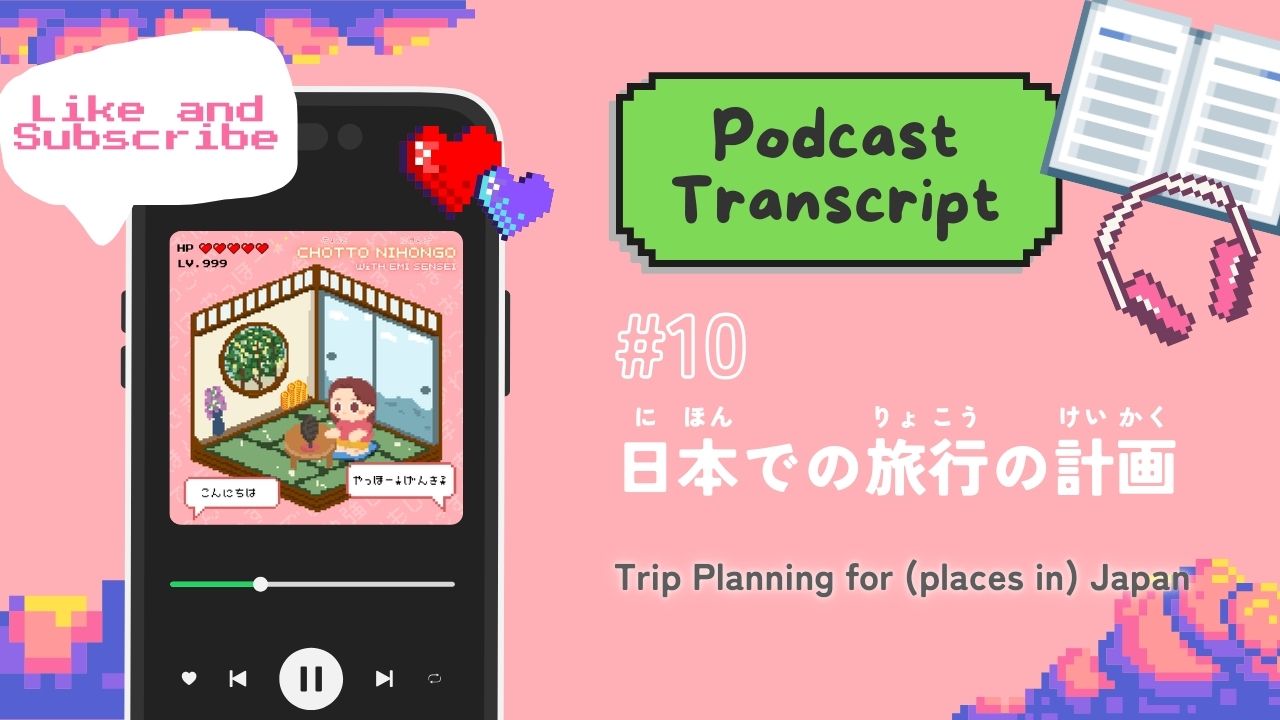
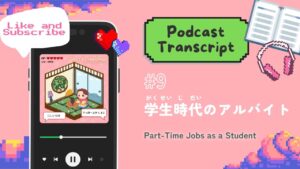
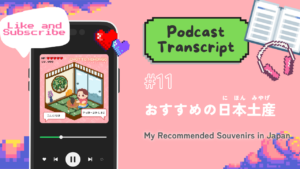
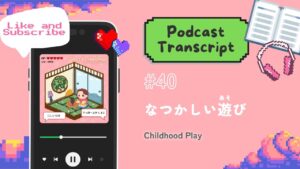
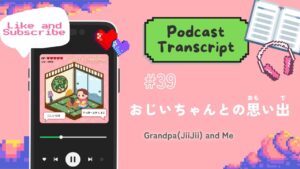

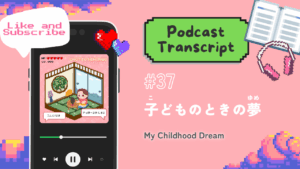
コメント|Comment